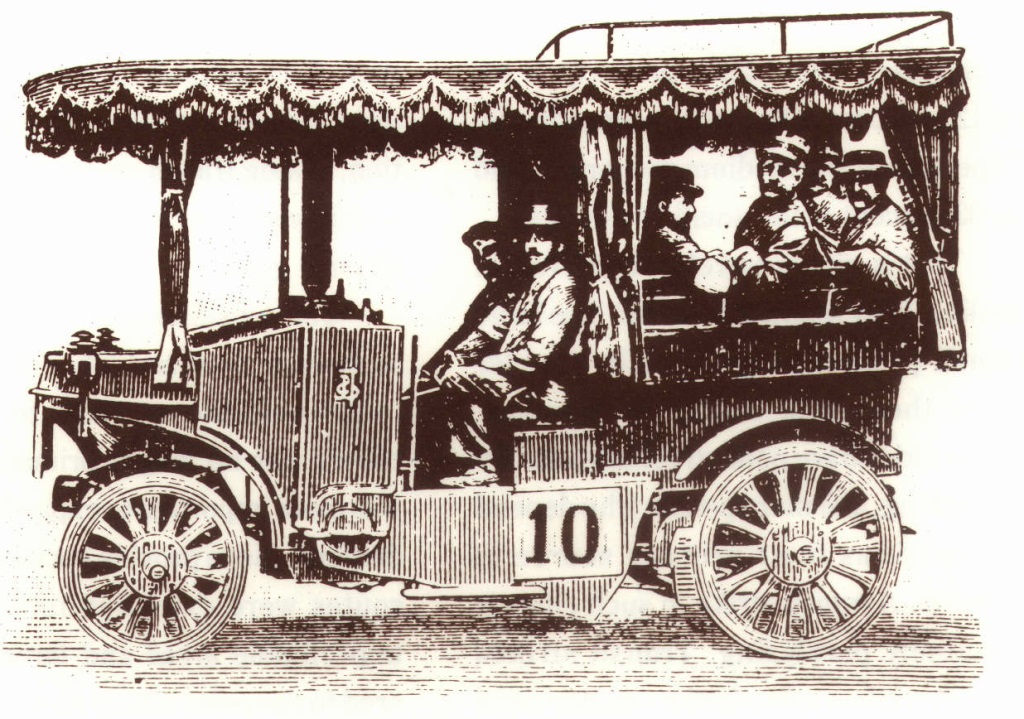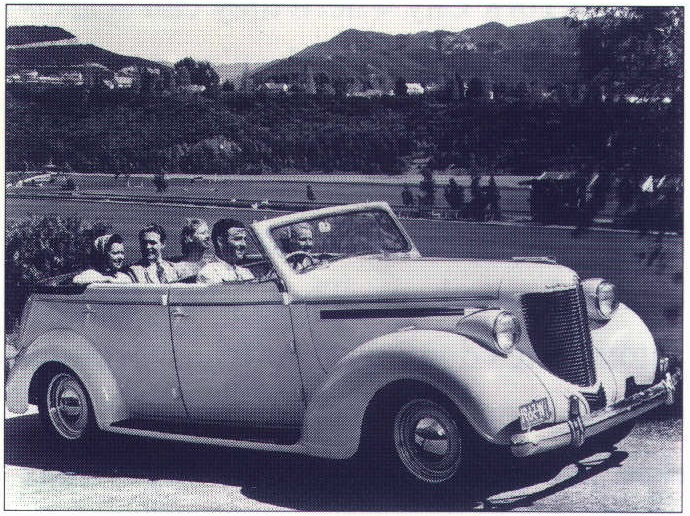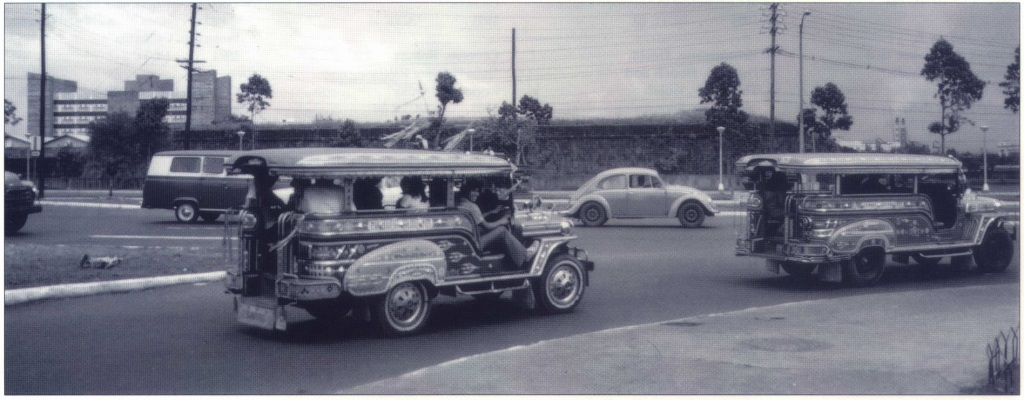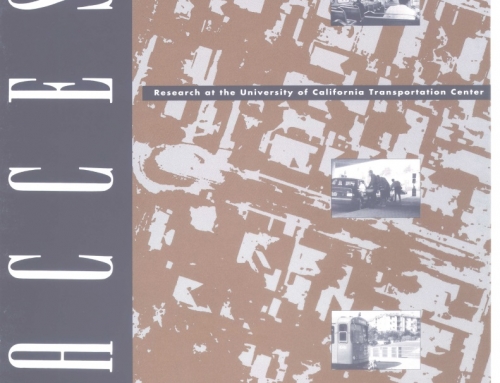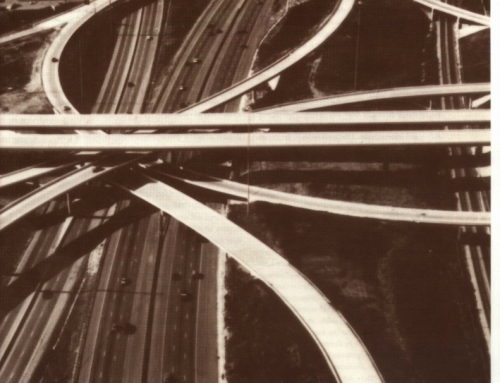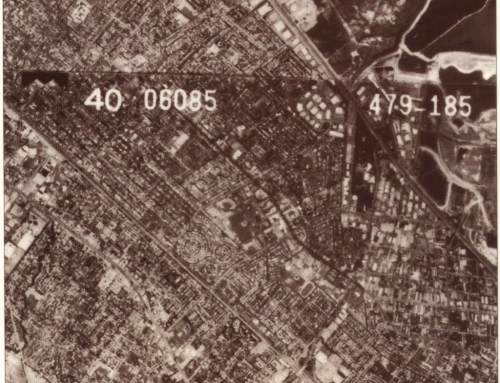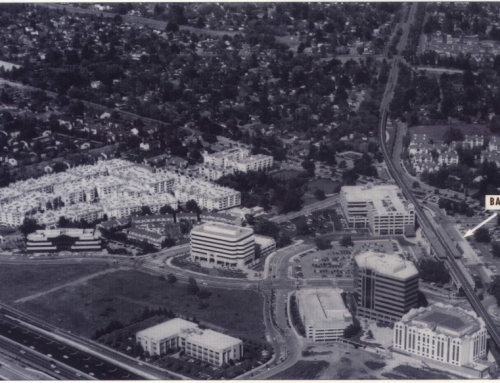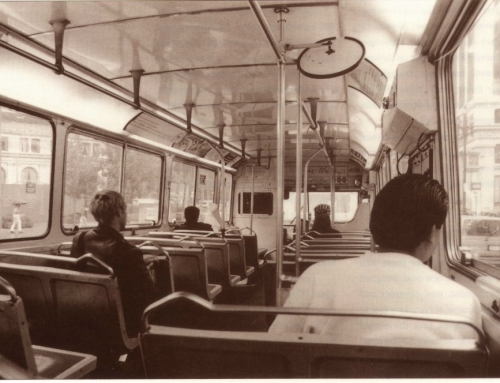They’ve made it possible for most of us to leave the old urban centers and move into decent houses in the spacious suburbs. They permit most of us to live where we choose and then to accept jobs located at any compass point from our homes. We’re free to go wherever we wish and whenever we wish, freed from the rigid schedules of common carriers.
These freedoms have mixed consequences. During this, the century of the automobile, the high-density downtowns of most cities have stabilized or declined and, with them, proportions of downtown jobs, radial patterns of travel, and use of public transit. Declining transit riding must be the most tragic of those effects. Transit patronage has been falling during most of this century, except for that brief period during World War II when gasoline was rationed and there were no new cars to buy. In the years since the War, transit riding has fallen steadily – from 114 trips per capita in 1950, to 37 in 1970, to 31 in 1990. Since 1964 the federal government has spent more than $100 billion to improve and expand transit service, and yet trips to and from work in urbanized areas, the ones widely believed to be most amenable to transit, have been falling even more dramatically: from 25 percent of work trips in 1960, to 14 percent in 1970, to 10 percent in 1980, down to perhaps 5 percent today. In the suburbs, transit use is down to about 2.5 percent of trips to work. Nationwide, people use transit for only 2 percent of their urban trips. With the exception of walking and bicycle trips, virtually all the rest are by private car.
Cars Travel Best
Journalists keep telling us that “Americans have a love affair with the automobile,” as though some irrational infatuation has seized us. But they’re wrong. Americans-and Europeans and Asians and Africans – have simply discovered that the automobile is the most effective surface – transportation system yet devised. Unlike all other modes, it provides no-wait, no-transfer service and, owing to substantial subsidies, it does so at tolerable cost. Where parking is available, as in most suburban settings, it provides door-to-door accessibility. It’s no wonder that Americans, and everyone else who can do so, have adopted cars as their primary mode of travel.
Moreover, travel times for automobile commuters have been falling-falling slightly but falling nevertheless. Between 1983 and 1990, the national average commute trip by car ebbed from 20.4 minutes to 19.7 minutes. During the same period, commuting times via public transit increased-from 46.1 minutes to 49.9 minutes. (‘That’s roughly 20 minutes by car and 50 minutes by transit.) During that same period, average mileage distances increased for auto commuters (from 9.9 to 10.6 miles) and decreased for transit commuters (from 15.1 to 12.6 miles). For most automobile users the trends are toward fewer minutes and greater access. For most transit riders, it’s just the opposite-more minutes and less access. The time savings are surely one reason commuters chose cars over buses and trains.
What About Nondrivers?
Even in America, all adults do not yet have discretionary use of cars. About 11 percent of U.S. households still don’t own one. About 10 percent of the driving – age population aren’t licensed to drive; they’re either too old or too disabled – or they live in New York City where they can scarcely use a car, even· if they’ve got one. Perhaps a fourth of unlicensed adults can’t afford cars. About a third of U.S. households still have only one car that all family members share. Thus, even though automobiles dominate our transportation system, even though there are more cars than licensed drivers, many Americans still don’t have access to them.
That inequality poses a central issue for transportation policy. It compels us to ask, How can we bring the advantages of automobile accessibility to everyone? One way, of course, is to expand car ownership – but that might increase congestion, pollution and energy consumption. Alternatively we might invent a kind of public transit offering accessibility for the carless, comparable to what car owners enjoy.
The Car’s Consequences
It’s important to remind ourselves of two value-laden facts:
First, automobiles were a major force behind the geographic explosion of metropolitan areas, extending a long-term historical trend. Autos, like telephones, permit direct connection from everywhere to everywhere, and that’s what allows our contemporary suburbs to thrive economically and socially. It would be a great loss if that widespread connectivity were to be weakened by anti-auto mandates constricting free use of cars.
Second, and equally important, the auto’s popularity and the expanding suburbs have caused the decline and, in some places, the virtual demise of mass transit services. Trips between dispersed origins and dispersed destinations of contemporary suburbs are not readily served by conventional mass transit’s large vehicles; instead, they inevitably get served by small, individualized vehicles-that is, by automobiles. Most often by automobiles carrying only the driver. As a result, carless persons who remain dependent on transit are made worse-off. In something akin to a national social disaster, the rise of the automobile and the decline of transit have meant that many citizens are deprived of access to suburban jobs and hence to a livelihood and to the many advantages of modern urban life. To be sure the plight of the jobless can’t be blamed solely on the transportation system; but, just as surely, automobile transportation is implicated in the tragedy.
So, what can be done to reverse that decline of public transit service?
Ridesharing as Public Transit
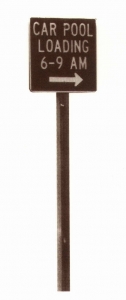 Bryan Clymer, the former administrator of the Federal Transit Administration, redefined transit to include all passenger vehicles carrying more than a solo driver. He was declaring in effect that modern public transit includes carpools and other small vehicles having multiple passengers. If we’re willing to accept his concept, my question can be modified to ask: What incentives might induce solo drivers to share their cars with others? Or: What’s needed to turn solo-driven cars into transit vehicles? Or: How can we turn more driven into rider?
Bryan Clymer, the former administrator of the Federal Transit Administration, redefined transit to include all passenger vehicles carrying more than a solo driver. He was declaring in effect that modern public transit includes carpools and other small vehicles having multiple passengers. If we’re willing to accept his concept, my question can be modified to ask: What incentives might induce solo drivers to share their cars with others? Or: What’s needed to turn solo-driven cars into transit vehicles? Or: How can we turn more driven into rider?
It’s something of a paradox that, despite all the complaints about highway congestion, we enjoy a tremendous excess of capacity. As Wilfred Owen of Brookings once observed, because most
American cars are carrying only the driver, at least three seats remain empty enough empty front seats to carry the rest of the U.S. population and enough back seats for the entire population of the former Soviet Union. That fact has led to many efforts to encourage carpooling, but the sad part of that story is that ridesharing has been on the decline. Nationwide, carpooling fell from about 20 percent of work trips in 1980 to about 13 percent in 1990. Can we now reverse that trend?
High-occupancy vehicles lanes (HOV lanes) have proved somewhat successful in encouraging ridesharing in places like Virginia’s Shirley Highway. The San Francisco Bay Bridge’s toll-free HOV lanes for vehicles with three or more persons triggered a telling unplanned response: solo drivers now stop at BART stations and bus stops to pick up two passengers – strangers who’ve been waiting in polite queues.
With three persons in the car, the former solo-drivers now save up to 20 minutes by avoiding the toll gates, and the $1.00 toll besides. That bit of casual, one-directional carpooling has raised car occupancy on the bridge from the regional average of 1.1to1.9 persons in the westbound morning peak-a 73 percent improvement. It’s an instructive clue for transit-system redesign.
In addition to creating incentives for voluntary ridesharing, improvements must be made in more formal public transit systems. Because the contemporary suburban pattern consists of dispersed origins and destinations, the most promising strategies for public transit are those that use small vehicles, such as cars and vans-vehicles sized for the few persons making the same trip at the same time.
Dial “711”
A merger of automobiles, telephones, cellular phones, radios, satellite locators, and computers could support new transit systems that are compatible with modern suburbs. Following Robert Behnke’s lead we envision computer based dating systems that, in real time, would match drivers and potential passengers having the same origins, destinations, and schedules. A phone call to
“Multi-Mode Transport Central” would permit residential neighbors with common destinations to fill some of those empty seats on any given day and hour, even though they’re total strangers. The incentive to the passenger is a convenient trip by car at tolerable cost. The incentive to the driver is reduced travel cost and perhaps even supplemental income.
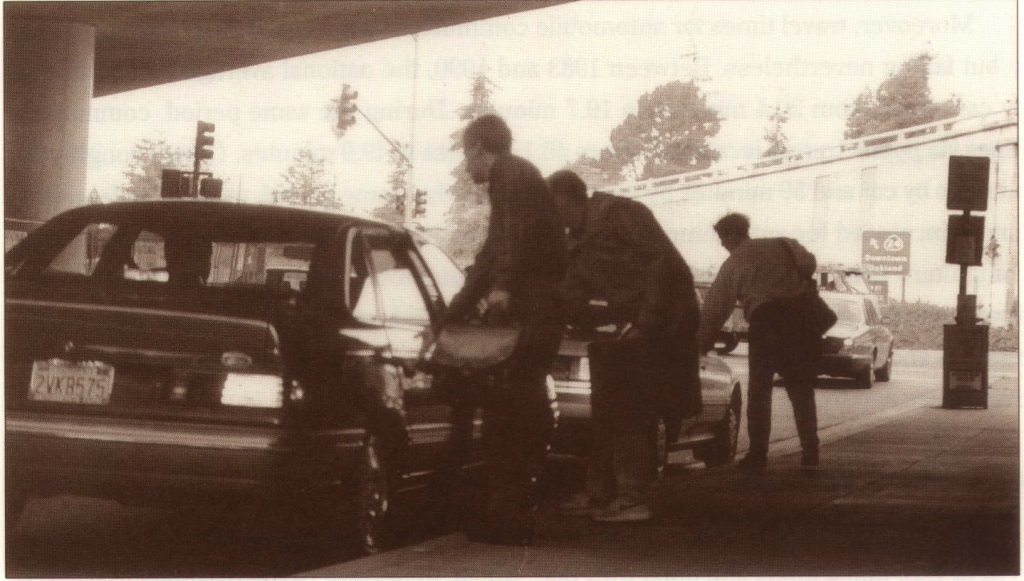 The Federal Transit Administration is now exploring the idea, as are increasing numbers of state and local transportation agencies. Under the banner of APTS (Advanced Public Transportation Systems), they’re conducting experimental field tests of potentially integrated communication-transportation transit systems. We can now foresee metropolitan- wide transit systems, each focused on Transport Central’s computer. A person wishing to go from here to there at a specified time phones the transport help line, say 711, and places a request by punching the phone buttons. The computer then searches for a neighbor traveling at that time to that place and willing to share an empty seat for a fee. If none is found, it searches for the nearest publicly or privately owned bus, or van, or taxi which it then sends to the caller’s front door.
The Federal Transit Administration is now exploring the idea, as are increasing numbers of state and local transportation agencies. Under the banner of APTS (Advanced Public Transportation Systems), they’re conducting experimental field tests of potentially integrated communication-transportation transit systems. We can now foresee metropolitan- wide transit systems, each focused on Transport Central’s computer. A person wishing to go from here to there at a specified time phones the transport help line, say 711, and places a request by punching the phone buttons. The computer then searches for a neighbor traveling at that time to that place and willing to share an empty seat for a fee. If none is found, it searches for the nearest publicly or privately owned bus, or van, or taxi which it then sends to the caller’s front door.
Being virtually guaranteed a ride at an acceptable price and at the right time, many who are now solo drivers might be enticed into becoming carpoolers-i.e., transit riders. Whether the vehicle that arrives is a neighbor’s car, van, small bus, or taxi, is probably inconsequential; whatever the small-vehicle type, the operational service characteristics are approximately the same. Any of these interchangeable paratransit vehicles can provide door-to-door, short-wait, no-transfer service, comparable to the level of service that a private car provides – and, for some, without the hassle and costs of parking.
The utility of auto-based transit service need not be reserved to suburbanites. By far, the largest number of transit-dependent adults today have low incomes, live in central cities, and lack discretionary use of cars. Because most new jobs are opening in the suburbs and because many center-city residents cannot live near those jobs, the decline of conventional public transit continues to worsen their predicament. Where no bus routes run from nearby inner-city locations to specific suburban job sites, some fortunate job holders use gypsy cabs and other informal, perhaps illegal, paratransit services. But these may be expensive and unreliable. A great many other persons simply remain unemployed. Far better that everyone be able to dial 711 and be assured a ride to work and a ride home at an acceptable price or, for would-be drivers, a new source of income.
Jitney for Hire?
Other countries long ago demonstrated the viability of automobile-based transit services. Jitneys are the main components of transit systems in many Third World countries. Some jitneys ply fixed routes while others operate like collective taxis and take passengers directly to their destinations. They offer employment opportunities for a great many otherwise unemployed or underemployed persons. They furnish low-cost transportation service that, in some places, approximates that of private autos. In virtually all places-in sharp contrast to the heavily subsidized transit systems in the United States they operate at a profit for their private operators.
Although jitneys have largely disappeared from this country, we still hold onto the memories of their effectiveness and profitability. The new door-to-door airport shuttles in Los Angeles and San Francisco suggest we may have a rebirth of privately owned, profitable, small-vehicle systems operating in public-transit modes. However, a high barrier stands in the way of expanding paratransit service in the United States. Strict regulations in many cities severely constrain entry into the taxi-jitney business, largely through limits on the numbers of licenses they allow-no doubt a direct response to the wishes of the taxi industry. However, if that oligopolistic constraint can somehow be overcome if the jitney-taxi business can be opened to new entrants and if the attributes of high-tech communications can be merged with the attributes of low-tech Third World jitneys-we might generate a new high-quality transit service.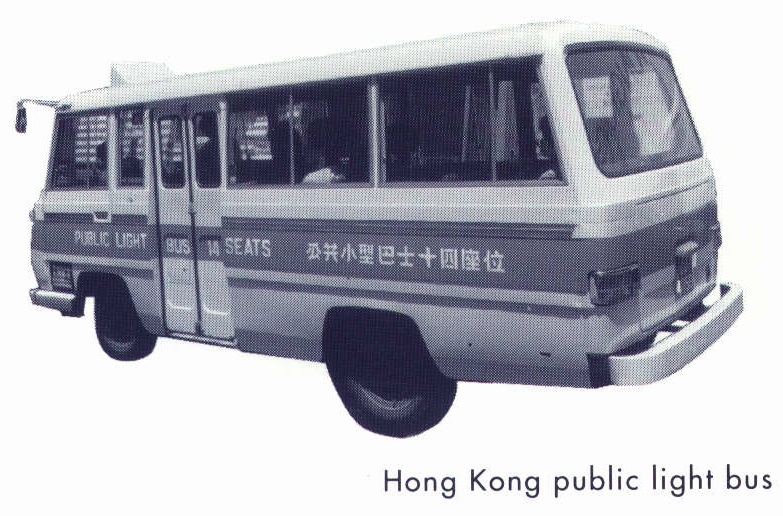
Any such paratransit system will have to deal with passengers’ potential fear of strangers. Recent experience with Shirley Highway and Bay Bridge carpools and with rideshare benches in retirement villages suggest that persons living in the same neighborhood are likely to be fairly trusting-and safe. Nevertheless, a formalized transit system must provide reasonable assurance of safety, at least comparable to that of municipal bus operators.
Of course, no transit system can become a panacea. Real-time carpools might never attract more than 10 percent of potential commuters. But, by serving only that niche within the commuter market, it will go a long way toward reversing transit’s long-term decline.
Small Vehicles, Big Returns
If it’s true that the automobile owes its tremendous success to its door-to-door, no-wait, no-transfer service, and if it’s true that the structure of the modern metropolis is incompatible with large-vehicle transit systems like trains, trolleys, or even SO-passenger buses, then it must also be true that workable transit systems in low-density sections of the metropolis must be those using automobile-like vehicles. I suggest that the ideal suburban transit system will take its passengers from door to door with no transfers, with little waiting-and that it will fit the small numbers of persons having the same origin, the same destination, and the same schedule. Only such a system can compete with the private car on its own grounds.
So, if you’re looking for a high-odds investment, just dial 711, talk to the computer, and place your bets on transit systems that rely on automobiles.
Further Reading
Robert W. Behnke, California Smart Traveler System (Washington, D.C.: USDOT, Federal Transit Administration, February 1992).
Robert Cervero, Fostering Commercial Transit: Alternatives in Greater Los Angeles (Los Angeles: Reason Foundation, Policy Insight No. 146, September 1992).
Allan E. Pisarski, Travel Behavior Issues in the 90’s (Washington, D .C.: USDOT, Federal Highway Administration, July 1992).
Robert W. Poole, Jr. and Michael Griffin, Shuttle Vans: The Overlooked Transit Alternative (Los Angeles: Reason Foundation, Policy Paper No. 1 76, April 1994).
Martin Wachs, “Can Transit Be Saved? Of Course It Can,” In Proceedings of the Metropolitan Conference on Public Transportation Research (Chicago: University of Illinois, Urban Transportation Center, June 1992), pp. 1-25.

